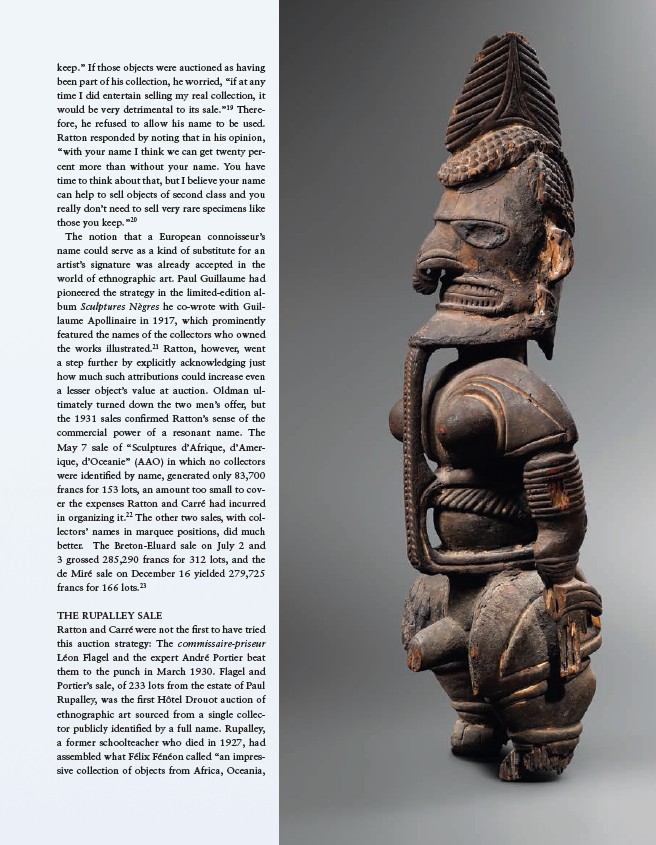
115
keep.” If those objects were auctioned as having
been part of his collection, he worried, “if at any
time I did entertain selling my real collection, it
would be very detrimental to its sale.”19 Therefore,
he refused to allow his name to be used.
Ratton responded by noting that in his opinion,
“with your name I think we can get twenty percent
more than without your name. You have
time to think about that, but I believe your name
can help to sell objects of second class and you
really don’t need to sell very rare specimens like
those you keep.”20
The notion that a European connoisseur’s
name could serve as a kind of substitute for an
artist’s signature was already accepted in the
world of ethnographic art. Paul Guillaume had
pioneered the strategy in the limited-edition album
Sculptures Nègres he co-wrote with Guillaume
Apollinaire in 1917, which prominently
featured the names of the collectors who owned
the works illustrated.21 Ratton, however, went
a step further by explicitly acknowledging just
how much such attributions could increase even
a lesser object’s value at auction. Oldman ultimately
turned down the two men’s offer, but
the 1931 sales confirmed Ratton’s sense of the
commercial power of a resonant name. The
May 7 sale of “Sculptures d’Afrique, d’Amerique,
d’Oceanie” (AAO) in which no collectors
were identified by name, generated only 83,700
francs for 153 lots, an amount too small to cover
the expenses Ratton and Carré had incurred
in organizing it.22 The other two sales, with collectors’
names in marquee positions, did much
better. The Breton-Eluard sale on July 2 and
3 grossed 285,290 francs for 312 lots, and the
de Miré sale on December 16 yielded 279,725
francs for 166 lots.23
THE RUPALLEY SALE
Ratton and Carré were not the first to have tried
this auction strategy: The commissaire-priseur
Léon Flagel and the expert André Portier beat
them to the punch in March 1930. Flagel and
Portier’s sale, of 233 lots from the estate of Paul
Rupalley, was the first Hôtel Drouot auction of
ethnographic art sourced from a single collector
publicly identified by a full name. Rupalley,
a former schoolteacher who died in 1927, had
assembled what Félix Fénéon called “an impressive
collection of objects from Africa, Oceania,